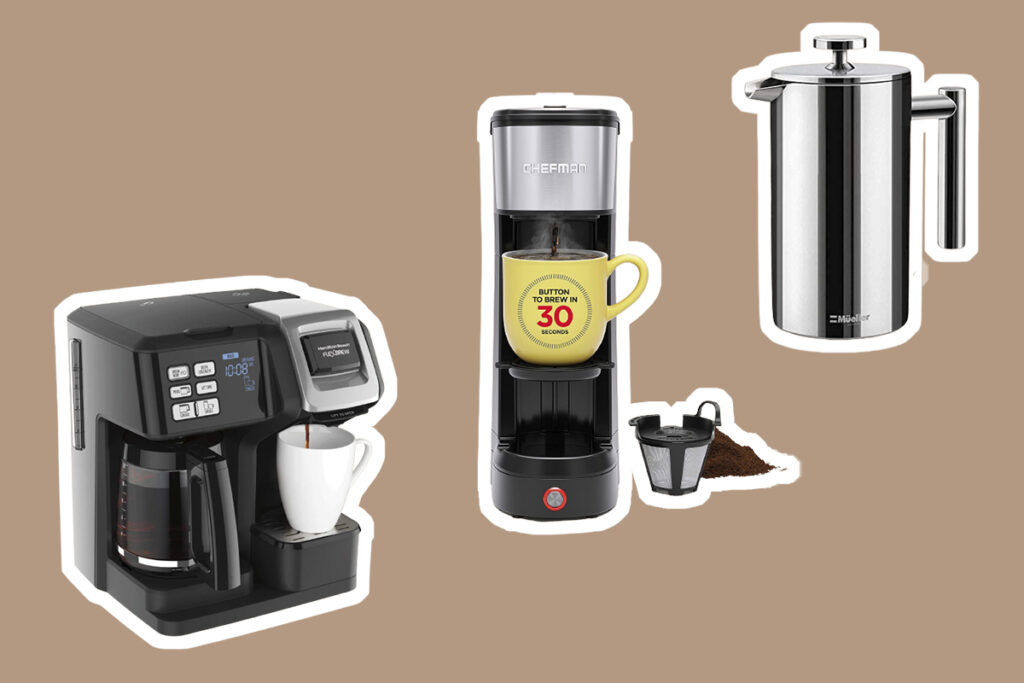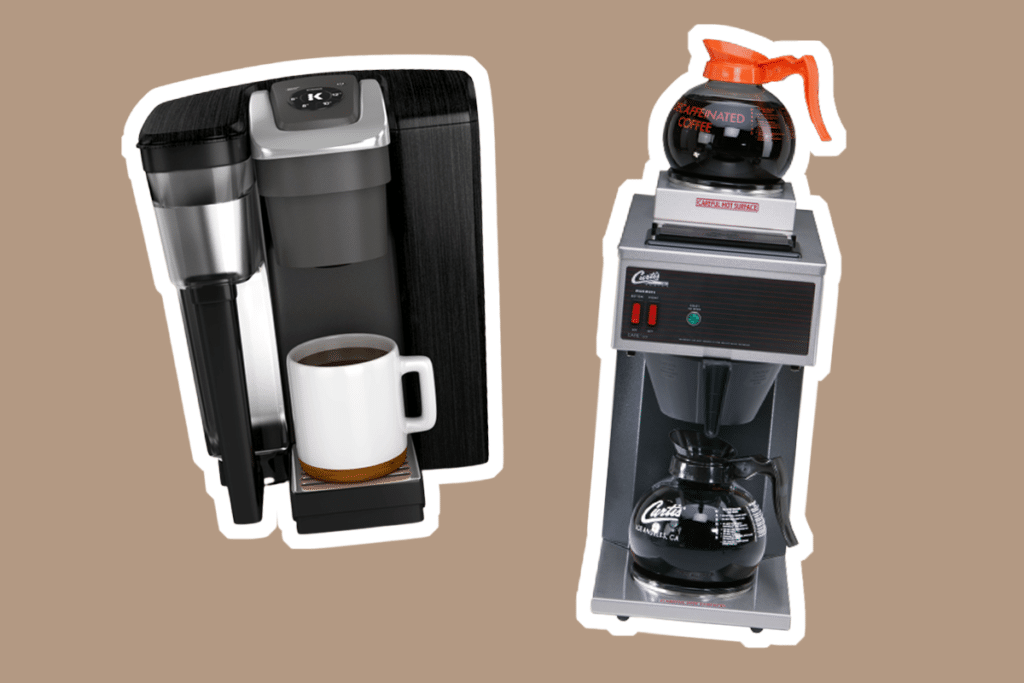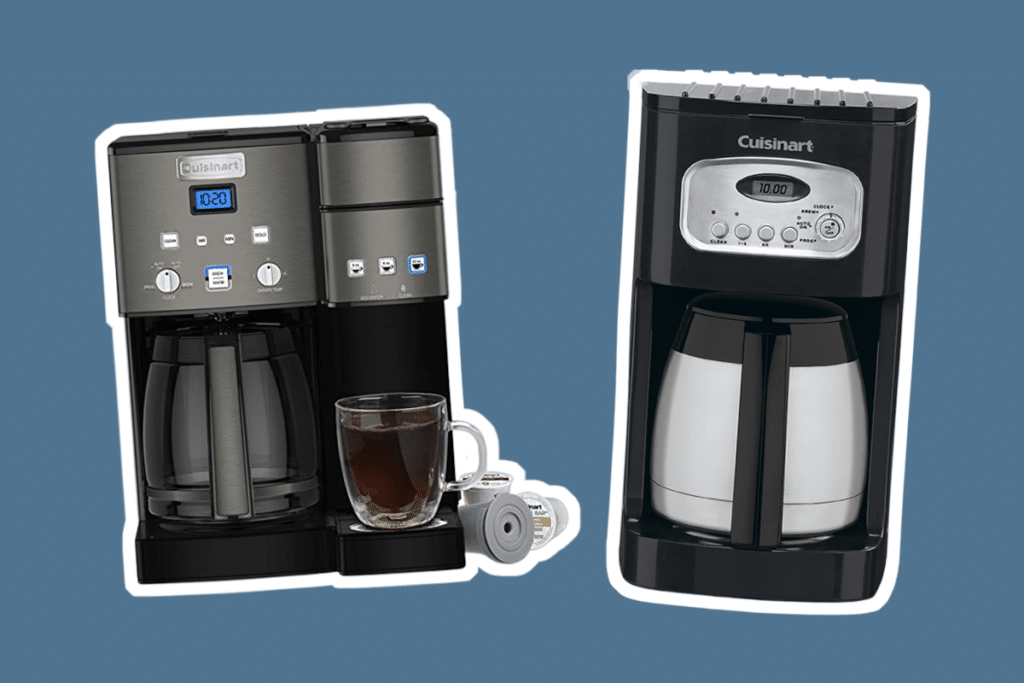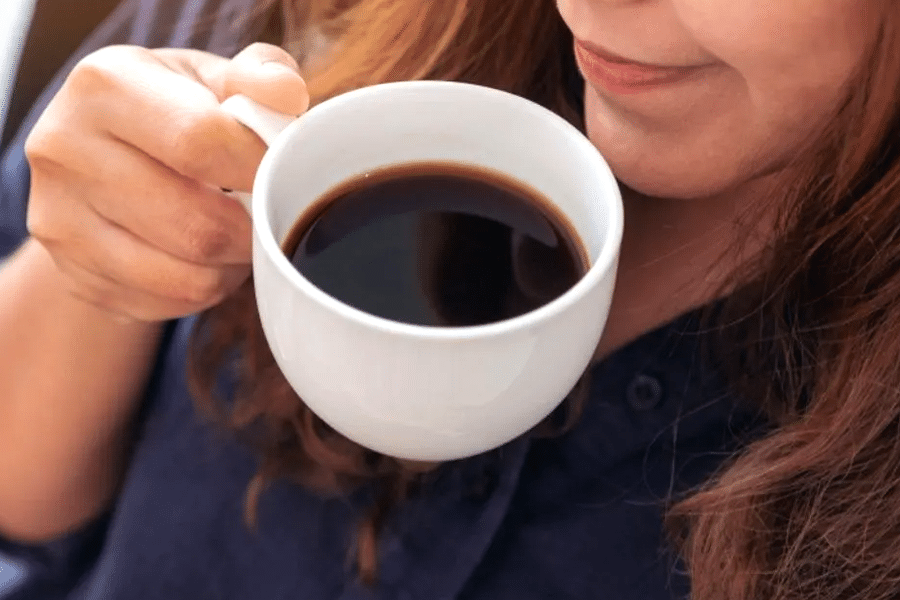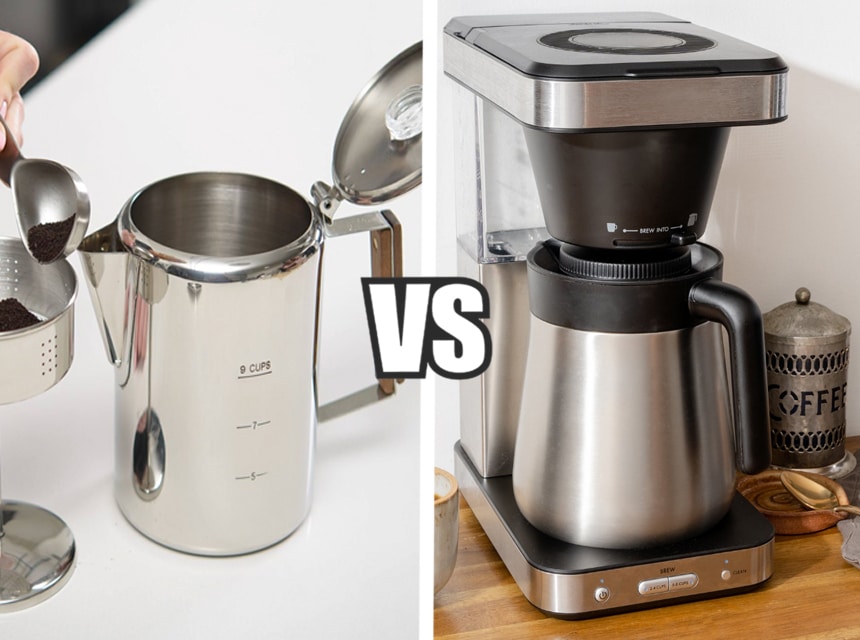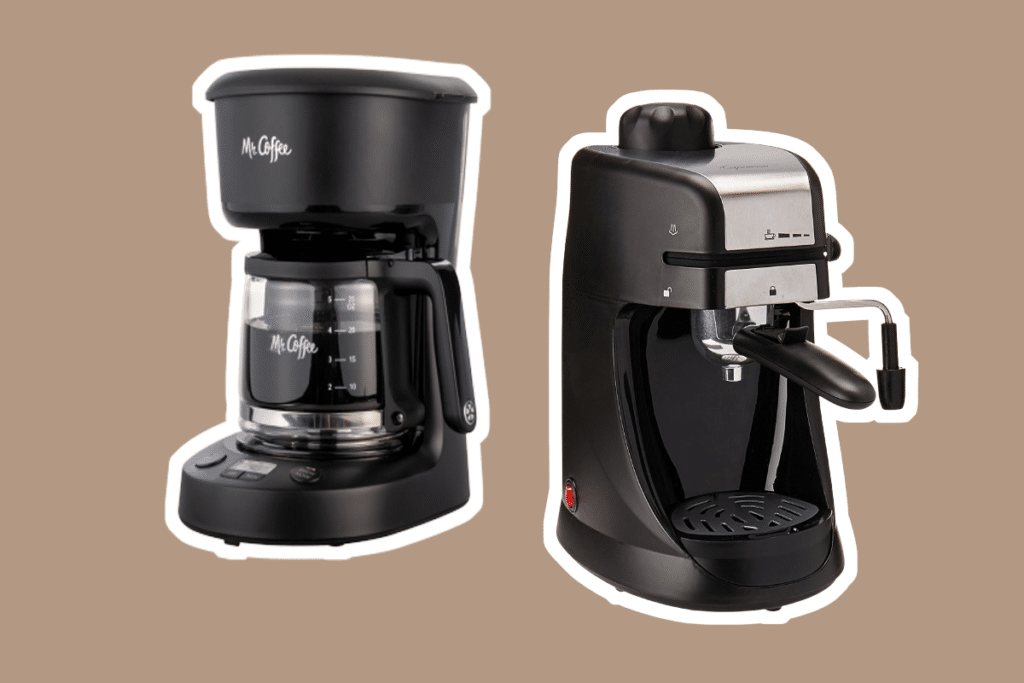

According to the BBC Trusted Source Three cups of coffee a day 'may have health benefits' Moderate coffee drinking is safe, and three to four cups a day may have some health benefits, according to a large review of studies, in the BMJ. www.bbc.com , drinking at least 3 cups of coffee has significant health benefits, including a reduced risk of liver disease. Admit it: half the fun of making coffee comes from the coffee maker you use. If you’re a coffee enthusiast, then you’ve definitely come across the Moka pot vs. percolator. They are 2 of the most classic coffee makers in the market and have a vintage appeal that’s hard to resist.
The Moka pot and percolator also have a similar design which is why most people group them together. However, they couldn’t be more different. A quick online search will reveal what they have stood the test of time, and it’s their distinct features that make these coffee makers stand out. Let’s take a dive into the Moka Pot vs. Percolator, what they do, the kind of coffee they make, and their main differences.
The Moka pot was invented by Alfonso Bialetti in 1933 and named after the Yemenite city of Mocha. This classic coffee maker was sometimes called a stovetop espresso, and even though more manufacturers are making Moka pots, Bialetti still remains their original producer. One of the reasons why this coffee maker is a favorite among coffee lovers is the fact that it’s affordable. This allows you to make delicious espresso at the comfort of your home without breaking the bank, as is with most modern espresso machines.
If you enjoy making coffee the old way, then you’ll definitely appreciate how the Moka pot works.
It’s technically a percolator as it passes water through the coffee grounds instead of letting them soak in water, as is common in a French press.
Place your Moka pot on the stove, and after a few minutes, the water will start boiling, causing the steam to pass through the coffee grounds and form a brew. This brew is then directed into an upper chamber, where it starts dripping. If your Moka pot starts to make a whistling sound, it’s time to get it off the stove. This means that there’s no more water in the pot and your coffee is ready.
Pros
Cons
According to most reviews, the COLETTI Bozeman Camping Coffee Percolator is one of the best in the market. It’s made from stainless steel, uses medical-grade filters, and has a tempered glass top & a hardwood handle. This gives it the perfect balance between modern and vintage vibes. It’s efficient, easy to use, and can be used outdoors. It makes up to 9 cups and has a lifetime repayment guarantee which is a true mark of its quality.
The percolator is the oldest of the 2, and the first one dates back to 1819. It was invented by Joseph-Henry-Marie Laurens, a Parisian tinsmith who used the principle of evaporation to brew coffee by passing steam through a tube. This was an ingenious invention at the time, but when the drip coffee machines were invented, the popularity of the percolate fell. However, this French invention still has a loyal fan base, as is evident by the number of people who buy the percolator.
The working mechanism of this coffee pot is slightly complex compared to that of a Moka pot. The filter top and the coffee basket have to be fixed on the vertical tube, but the basic principles are similar. You put water in the lower chamber, exercising caution to ensure that it doesn’t make contact with the coffee filter. You then put the lid on and place your percolator on the stove.
When the water reaches its boiling point, the steam goes through the tube and drips into the coffee basket. It then filters through the coffee grounds and drains back into the lower chamber, creating a continuous brewing cycle. With this kind of mechanism, you can boil your coffee for as long as you wish since it’ll just keep going through the coffee and into the chamber in an endless cycle.
Pros
Cons
If you prefer percolators, experts recommend the Euro Cuisine PER04 Electric Percolator. It’s made from stainless steel but has a coffer finish that makes it more aesthetically appealing. This coffee maker has a brewing indicator that lets you know when your coffee is ready, is easy to clean, and is dishwasher safe. It can only make 4 cups of coffee in one serving.
To an untrained eye, the Moka pot and percolator may seem similar, but the only thing they have in common is that they make coffee. They have varying brewing mechanisms and produce coffee with different tastes.
Different brewing methods require varying coffee grinds for you to maximize the flavor. To get the best results out of the Moka pot, you need to use a fine grind. This is because the steam gets in contact with the coffee very quickly, and using a coarse grind will only result in weak coffee that tastes almost watery.
The percolator, on the other hand, requires a coarse grind because the coffee steps for a long time. This gives the large particles enough time to give up their deliciousness, slowly allowing you to extract better coffee. If you use a fine grind, you’ll end up with an over-extracted brew that’s bitter.
Moka pots are available in a serving size of 2 up to 12 cups. You should, however, note that in this case, the cups are usually espresso size, so they are significantly smaller than your regular mug. According to CNN Trusted Source How much coffee is too much? - CNN Is coffee safe or risky for your heart? Two recent studies appear to contradict each other on this question, which often leaves coffee-lovers scratching their heads. edition.cnn.com , too much caffeine can increase your chances of cardiovascular diseases. If you’d like to tone down the intense flavor and the effects of caffeine overload, we recommend that you add some cream to your coffee.
Percolators are also available in the same serving as Moka pots (2 to 12 cups), but in this case, they are regular size. This is enough coffee for a small office or your family. You can also make more coffee from the same grinds by simply adding more water after you take the first cup. Since percolators have a continuous brewing process, they can extract more flavor from the grounds.
The taste test is perhaps one of the most important factors that coffee lovers pay close attention to. The Moka pot produces a brew that’s as strong as espresso and has a deep and rich flavor that you’ll appreciate. This is also why these coffee makers are sometimes referred to as stove top espresso makers. The only downside is that this coffee sometimes tastes bitter, but you can neutralize this by adding steamed milk to make a cappuccino or latte or topping it up with water if you enjoy americanos. You should also check our review of the best Moka pots that will provide you with delicious coffee in the mornings.
The percolator, on the other hand, brews the coffee at very high temperatures resulting in a very robust brew. It’s also prone to over-extraction resulting in a brew that’s punchy and bitter. This is, however, a huge plus for coffee lovers who enjoy adding sweeteners or creamers. You could also make a delicious mocha by adding some milk and cocoa powder.
When it comes to the battle of tastes, the Moka pot is a definite winner.
Depending on the model that you go for, both Moka pots and percolators are very easy to use. You simply fill them with water, add your ground coffee to the basket, place the coffeemaker on the stovetop and wait for the magic to happen. The best part is that you don’t need to purchase modern temperature gauges or fancy timers because both pots make a loud sound when the coffee is ready. You also don’t need to use paper filters, so they are low-waste devices.
The Moka pot and percolator are both durable and are mostly made from polished aluminum or steel. The only way they’ll break is if you hit them hard with a heavy object. Percolators are, however, also available in a glass model, which is modern and stylish but breaks easily.
Both coffee makers are portable, and you can carry them with you on your travels. If you enjoy camping, they are the perfect outdoor companion. You should, however, be wary of melting the handles of most Moka pots. Even though they are heat resistant to a point, exposing them to open flames can damage them.
Here’s a quick tip: even though stainless steel coffee makers have a sleek and modern look, they don’t conduct heat as efficiently as aluminum does. This is why some of them result in uneven extraction.
Cleaning both coffeemakers is relatively easy; you simply disassemble them, throw away the grounds that are in the filter, and clean. Some models are dishwasher safe, but there are others, especially percolators, that require you to take off the coffee basket from the vertical tube, which can be challenging.
Most of the time, however, Moka pots and percolators are low maintenance and only require a simple rinse. You should give them a thorough clean once in a while to get rid of tough stains, but the good news is that you only need regular household ingredients. This is refreshing as most espresso machines usually use descaling tablets.
If you’d like to descale your Moka pot or percolator, you simply create equal parts water and vinegar solution. Pour this solution into your machine and place it on the stovetop to heat. Rinse and repeat this process as necessary until your coffee maker is clean. Use a lot of water in the rinsing process to get rid of the vinegar smell and flavor.
The choice between the Moka pot vs. percolator boils down to your preferences. If you prefer your coffee strong and with depth, the Moka pot is your obvious choice. If you’re, however, looking for a coffee maker that can make brews for a small group of people, then you should go with the percolator. Both coffee makers are easy to use, relatively affordable, and are low maintenance. You just have to find the device that satisfies your unique coffee needs.
